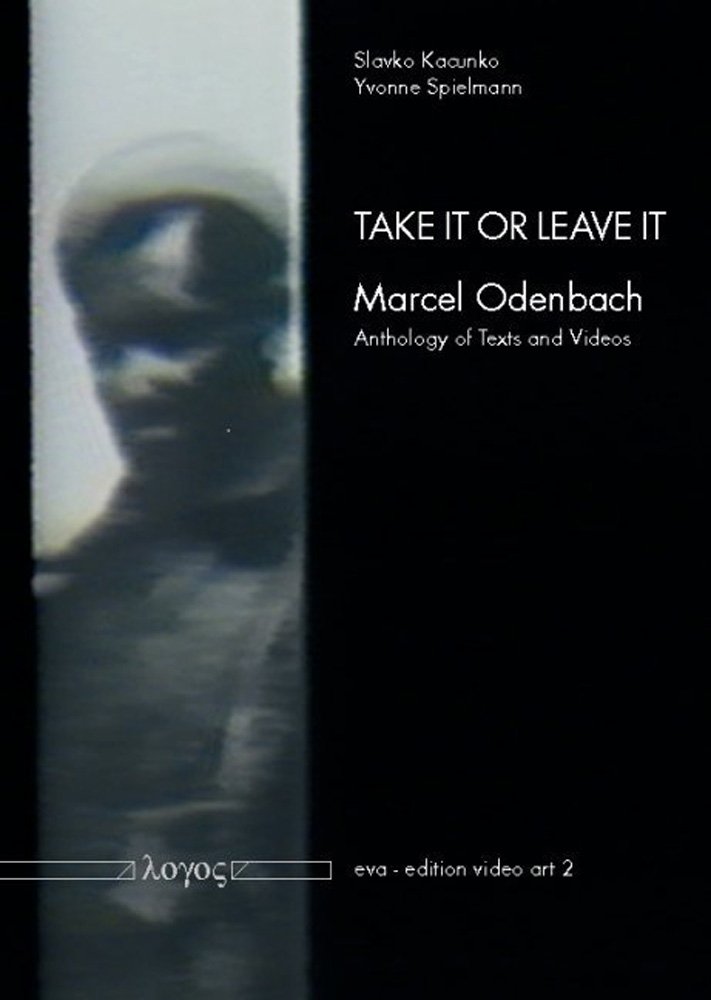
.
Enigmatic, poetic, baroque, spiritual and crudely political, Marcel Odenbach crosses and becomes a protagonist of the history of video art of the past four decades.
The book Take it or leave it. Marcel Odenbach. Anthology of texts and videos - edited by Yvonne Spielmann and Slavko Kacunko - pays tribute to the extensive career of the artist.
The publication offers a retrospective of the artist - looking at his projects, ideas and processes – as well as an open vision, a projection, a series of documents, new essays and a DVD with 10 original videos, that suggest new perspectives and analyses on the work of Marcel Odenbach.
A general feeling of tension and mysticism marks the artist's works. The construction of triptychs in motion; the dissection of the screen; the simultaneous and alternating elements of fiction and reality are just some of the immediate components of the video-architecture of Odenbach.
The videos collected in the anthology range from portraits of Germany in the seventies and eighties, to more recent works spanning from Africa to India, from politics to spiritualism.
In the first video, To stay in a good mood or the spoilsports, a sense of tragedy, between the play and the wait, marks the anxious succession of images. Neurotic pastimes and hands alternate with images of events linked to the Baader-Meinhof group. In The city of Artists or Sit back and have some tea, there is a research of something that is not coming. An inspiration, an idea, a vision, maybe lost between the pages of a book, in intermittent radio stations, between the living images of monuments and urban corners. Symbols and references of the RAF (Rote Armee Fraktion) suddenly appear in the middle of this unsuccessful research.
In The distance between myself and my losses, Odenbach reaches, with his admirable technique, a collection and mixture of visions, sounds, voices and images, that together create a kind of ritual.
Referring to this piece, its aesthetic and the construction of a restricted visual field, Paul Virilio said: “The search for the minimum that one can perceive thus appears to be a paradoxical objective: how can you see without seeing, perceive without knowing what you really perceive?”[1] The issue of “seeing without seeing” involves a spiritual path and the limit of visibility does not refer to the openness of eyes, but to the one of mind and heart. “Die Distanz is thus the distance that separates not the visible from the invisible but clairvoyance form nonclairvoyance or, more precisely, belief from disbelief”.[2]
The video Disturbed places – Five variations on India it’s a celebration of life and its immense diversity. The circularity of elements: wheels, fans, circles of fire; the everyday life places: the street, the bar, the bus, the train; the presence of the four elements: earth, air, water and fire plus the fifth one, the Akasha in Hinduism, compose this beautiful art piece that begins with a fabrics seller and artist asking: “Who knows which images I can still trust?”
The other videos included in the DVD offer and reveal an excellent path between the poetics and politics of Marcel Odenbach.
The publication dissects the language, philosophy, gestures and visual and extra-visual codes of Odenbach, revealing techniques, characteristics, references and inspirations.
The anthology represents a serious and deep research on the work, the thinking, the vision and the career of the German artist, which can be extremely useful for researchers in the field of Cinema and video-art, and absolutely interesting for artists, critics and video art lovers.
__
.
[1] Paul Virilio, “A Glimpse”, in: Slavko Kacunko, Yvonne Spielmann (Eds.) Take it or leave it. Marcel Odenbach. Anthology of texts and videos. Logos Verlag Berlin. 2013. P.31
[2] Ibidem, P.34


